The history of hit points
Before regenerating health, before Doomguy, before D&D RPGs...where did hit points come from?
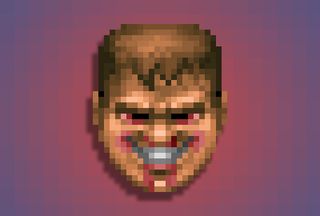
I don't remember which game we were playing, but it was the kind of Japanese RPG that listed everything you needed to know about its characters down the side of the screen. Magic points, coins, food, all summed up with helpful numbers. Only one of them was abbreviated: HP.
“What does HP stand for in this game?” I asked my friend, an expert on JRPGs.
“Health pineapples,” he confidently replied. “You have to knock all the pineapples off before you can hurt someone.”
HP, whether it stands for hit points, health power, or indeed health pineapples, is one of many mechanics to come to video games via the original tabletop roleplaying game Dungeons & Dragons. However, the idea of representing the amount of punishment a character can take with a discrete number of points is much older than D&D. And while we might all know what the abbreviation means, it turns out that what hit points are meant to represent isn't quite so obvious.
"They didn't care if they could kill a monster in one blow, but they didn't want the monster to kill them in one blow." — D&D co-creator Dave Arneson
In a 2004 interview with GameSpy, D&D's co-creator Dave Arneson explained that the earliest version of the game didn't have hit points. The rules had evolved from wargames he and fellow D&D inventor Gary Gygax played, in which a single successful attack was all it took for a soldier to die.
That changed when they started experimenting with having players control individual heroes rather than entire armies, as players identified with them much more strongly. As Arneson put it, “They didn't care if they could kill a monster in one blow, but they didn't want the monster to kill them in one blow.”
Arneson had previously made his own rules for a naval wargame set during the Civil War called Ironclads, and together with Gygax had collaborated on a Napoleonic naval game called Don't Give Up The Ship! Both games had a mechanic that allowed for ships to take multiple hits before being sunk, which they'd borrowed from the wargaming rules designed by author Fletcher Pratt in the 1930s. They borrowed those rules again for D&D.
The biggest gaming news, reviews and hardware deals
Keep up to date with the most important stories and the best deals, as picked by the PC Gamer team.
In his book about the history of simulation games Playing At The World, Jon Peterson explains why hit points were such an important idea: “Hit points introduce uncertainty and variance […] In Dungeons & Dragons, even when the prospects of a hit are near certain, the damage dice provide another potential survival mechanism via endurance, another way of forestalling death and increasing the drama of combat.”
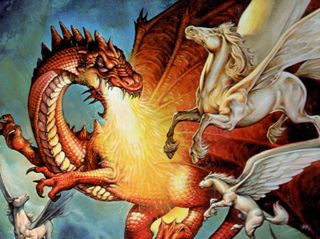
From table to screen
Like D&D, video game combat discovered a new sense of drama with hit points. Early arcade games like 1978’s Space Invaders typically killed players with a single successful enemy contact, using multiple lives to prolong the experience. Replacing that with the ability to survive a set number of hits before dying added a finer-grained rise in tension. It removes the frustration of being reset to the start of a level every time a player is so much as brushed by an enemy, and as the number of hit points remaining falls your anxiety rises in direct correlation.
Being on your last life may make you cautious, but there's a smoother transition with hit points. You gradually shift between playing more carefully as you approach half-health, biting your metaphorical nails as it dwindles below that, and sinking into erratic risk-taking when only a sliver of life remains.
Video games inspired by D&D were the first to copy hit points, as far back as 1975 games PEDIT5 and DND, which were coded for the PLATO system designed by the University of Illinois. DND was also the first game to have bosses, who could have hundreds or even thousands of what it called “Hits.”
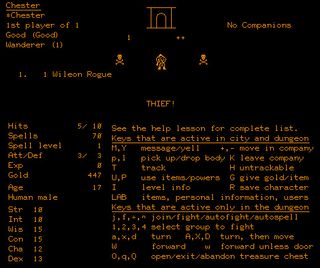
The first official adaptations of D&D to PC were the “Gold Box” series begun by SSI with 1988’s Pool of Radiance. They followed the rules of what was then called Advanced Dungeons & Dragons closely, which meant beginning characters had very few hit points. Playing around a table there’s always the option to fudge dice rolls to prevent deaths from feeling too arbitrary, but the computer was never so forgiving and players got used to reloading frequently.
Games that weren’t licenced had no such problem. The first Ultima began players with a tidy 150 hit points, and the second with 400. Important non-player characters like Lord British had totals so high that killing him became seen as a challenge, and by Ultima III players were luring Lord British to the beach so they could attack him with cannon-fire, as if he was one of the naval ships in the wargames hit points came from.
Arcade games tended not to represent hit points numerically, however. Memorably, in the platformer Ghosts 'N Goblins (ported to the Commodore 64 in 1986) Sir Arthur lost his armor on taking damage, continuing to fight in his underwear.
One of the first game to represent hit points with the now familiar life bar was Dragon Buster, a 1985 dungeon crawler by Namco with a Vitality meter that changed from blue to red as you took damage from its bats, snakes, and “cave sharks.” While red life bars would go on to become standard, other ways of visualizing hit points have been tried with varying degrees of success.
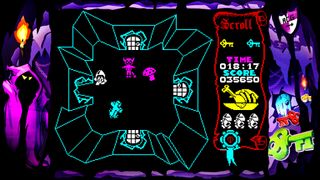
1983 ZX Spectrum/BBC Micro game Atic Atac had a slowly depleting roast chicken that tracked your starvation, and dinosaur fighter Primal Rage used veins leading to a heart that exploded at the moment of defeat.
Other games have tried to make their life bar a part of the game world, as in first-person Jurassic Park game Trespasser where it's a heart tattoo on the protagonist's breast you have to look down at to check. In sci-fi horror game Dead Space the life bar is represented by lights on the back of your armor, which would be very useful if you had a doctor standing directly behind you. Each of these visualizations is just a way of integrating a hit-point counter into the world, but in doing so they free the player from having to correlate a number with something that should feel real and immediate. They’re all still the same old hit points, under the surface.
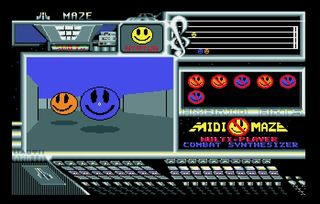
The true origin of BJ Blazkowicz and Doomguy.
MIDI Maze, a 1987 first-person shooter on the Atari ST, was an early example of both the deathmatch shooter and the idea of representing hit points visually. Each player was a floating smiley face, like a three-dimensional Pac-Man, and an icon of that face at the top of the screen became sadder as they took damage. Later shooters like Wolfenstein 3D and Doom would copy this idea, their protagonists' faces growing more bruised and bloody as they absorbed bullet after bullet.

Jody's first computer was a Commodore 64, so he remembers having to use a code wheel to play Pool of Radiance. A former music journalist who interviewed everyone from Giorgio Moroder to Trent Reznor, Jody also co-hosted Australia's first radio show about videogames, Zed Games. He's written for Rock Paper Shotgun, The Big Issue, GamesRadar, Zam, Glixel, Five Out of Ten Magazine, and Playboy.com, whose cheques with the bunny logo made for fun conversations at the bank. Jody's first article for PC Gamer was about the audio of Alien Isolation, published in 2015, and since then he's written about why Silent Hill belongs on PC, why Recettear: An Item Shop's Tale is the best fantasy shopkeeper tycoon game, and how weird Lost Ark can get. Jody edited PC Gamer Indie from 2017 to 2018, and he eventually lived up to his promise to play every Warhammer videogame.
Most Popular

